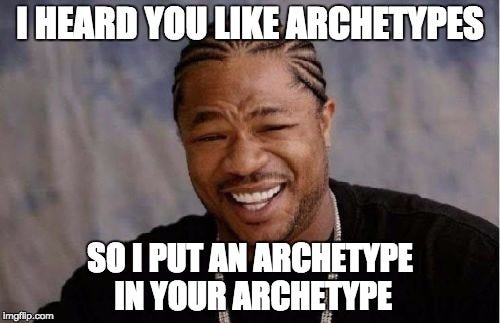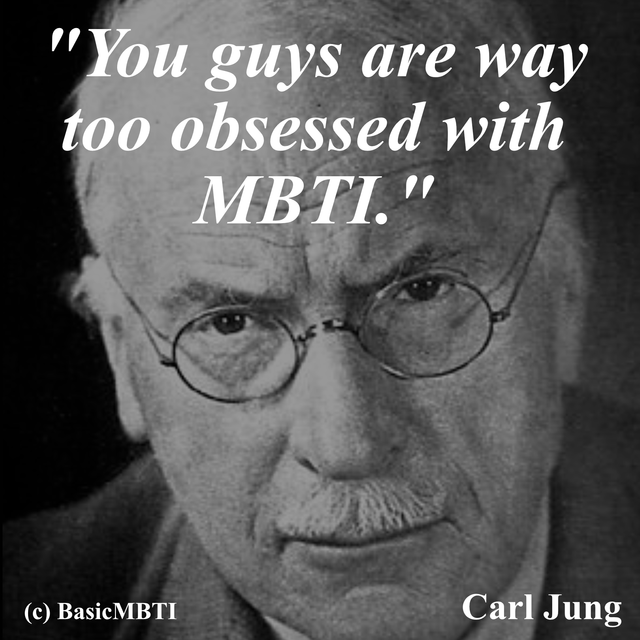The Four Leadership Archetypes
Why some leaders succeed and others fail, despite talent and skills. How to identify and align your leadership archetype with the company demands.
A quote from a recent podcast by Arsen Tomsky, CEO of InDrive, has stuck with me: “We live in a virtual simulation where everyone has a specific role to play.”
For the past 10 years, I’ve closely observed CEOs and leaders in different contexts. Some thrived and created culture-rich, efficient teams. Others wreaked havoc on teams and culture, despite their best intentions.
In both cases, they were exceptionally talented and skilled people. It’s just that their management archetype wasn’t closely aligned with the organizational challenge at hand.
The other question is: what is an archetype? How do you figure it out? How do you align your own leadership style with the demands of the organization?
To answer these questions, I’ve submerged myself in the rabbit hole of personal reflection and book crunching.
After countless articles and a dozen books, I’ve arrived at straightforward, tactical conclusions you can apply immediately.
First, it will help you understand your leaders better. If you decide to join a company, you will be able to determine whether the CEO’s leadership style aligns with yours. Many product managers jump into any upfront opportunity, neglecting this vital aspect.
Second, you will understand your own leadership style better—both its strengths and weaknesses. Clarity on your weaknesses is the true embodiment of an A-player.
Let’s dive in.
Today’s Free Article
The Four Archetypes. Why there are so many leadership types and how to distill them to the core ones.
The Polarities and Extensions. How an archetype can have a polar opposite expression. How archetypes can extend.
Aligning archetypes with organizational stages. Which leaders fit best in startups, scale-ups, corporations and companies taking a nosedive.

📝 Word count: 1367 words
⏱️ Reading time: ~12 minutes
🎭 The Four Archetypes
The vast array of leadership types
Ben Horowitz, in his classic essay, divided all CEOs into two types—wartime and peacetime. Wartime embodies a direct, top-down, high-stakes leadership (e.g., Andy Grove). On the flip side, peacetime is about growth, expansion, autonomy, and creativity.
Personally, I think this model is far too simplistic. For one, any binary classification neglects nuances. Secondly, a company goes through far more stages than wartime or peacetime. Thirdly, in today’s AI-driven era, time has accelerated so fast that you need to switch between both modes constantly.
So I decided to look for something more nuanced. I asked ChatGPT to conduct deep research to help me out on this one.
I ended up with 46 distinct leadership archetypes 🤯, spread across four big categories:
Academic (10)
Jungian archetypes (15)
Consulting framework archetypes (9)
Behavioral framework archetypes (MBTI, Hogan, etc.) (12)
What unites them all is that they try to be exhaustive at the cost of being actionable.
No wonder most managers are lost when trying to map out specific leadership types—there are just too many.
For instance, Lolly Daskal’s classification of “Eight leadership types” or Carol Pearson’s “Twelve archetypal characters.” While there’s some truth to each—like “The Truth Teller” or “The Jester”—it’s just far too many and clarity gets lost.
Jungian archetypes based on myths are useful directionally but are too detached to be practical for a day-to-day corporate setting.
Some classifications take a single trait or instrument (e.g., data or process) and label a leadership archetype based on that (Hogan’s data and process leader archetype). Come on.
You can’t label a leader “a data leader” or a “process leader”—every manager works with data and processes to some extent.
Boiling it all down to four types
You can gain more insight through personal observation.
For instance, Guvenz Domnez (CEO of Magnit Omni, ex-Procter & Gamble), whom I had the privilege to be coached by, refers to himself as a “transformer.” He joins underdog companies with potential and turns them around in a shockingly short time.
When I worked alongside Markus Villig at Bolt, I noticed how pragmatic he was. He was crunching numbers, P&Ls, and ROI calculations—pinpointing inefficiencies in minutes.
Other leaders I’ve worked with displayed the traits of visionaries or what I call gardeners (referred to in academic literature as “servant leaders”).
What I came up with is the following, somewhat MECE, model of four different leadership types.
It doesn’t mean that those archetypes are one-sided or static. A leader can possess multiple archetypes, some can be more developed than others. Archetypes can evolve and change. On top of this, certain archetypes can become destructive if applied to a wrong context.
⚖️ Polarities and Extensions
Polarities
When reading Lolly Daskal’s famous “Leadership Gap,” I was struck by the concept of “polarities.”
She borrows it from Carl Jung’s notion of the “shadow” and extends to leadership archetypes.
A polarity, in essence, is the opposite dark side. Every archetype has a shadow side or weakness.
For instance, a visionary can slip into “dreamer mode.” A dreamer constantly spurs out ideas, ignoring existing priorities and the fact that someone needs to own and execute them. There may be plenty of novelty but very little output, and the team might lose direction.
There’s a thin line between transformation and destruction. Some “transformer” tactics rely on fear as a driver and can be extremely effective, but they’re often short-term and come at the cost of long-term team morale.
A gardener can become so empathetic that they evoke the image of a “father” treating their team like children. When a corporate dynamic turns into a family dynamic, relationships are placed above impact and efficiency, leading to conflict aversion and overall complacency—not great.
An efficient pragmatist can become so routine- and numbers-focused that work turns into a dry numbers game. This is when the intrinsic meaning behind work dries up and recognition stalls. People are seen not as individuals but as efficiency tools—also not great.
Extensions
From what I’ve observed, a leader can have a dominant archetype and an extension.
For instance, a visionary can also be a pragmatic. A business could be founded on an inspiring vision but run on a very lean operational budget with tight controls.
A gardener can be a part-time transformer as well. At its core, such a leader is extremely empathetic, but when needed can apply candor or even terminate people.
You get the point.
The thing is, if your company needs a transformer but you hire a gardener with just a transformer extension, the effect takes longer to materialize and comes at a higher cost.
I’ve also observed leaders who display three archetypes at once (e.g., visionary, gardener, and pragmatic). I call them “Level 5” leaders (bluntly borrowing the concept from Jim Collins’s Good to Great). It’s possible, but such leaders are rare.
When leaders obtain their archetypes
A leader starts showing an archetype at the GPM/Director-level roles, but obtains a distinctive one already at the C-level stage.
I wouldn’t try to classify early-stage managers with small groups as a large chunk of their work is still done hands on.
📈 Alignment with organizational stages
The leadership archetype should closely align with a company’s maturity stage.
When you have a Pragmatic at the helm of a scale-up, the company will grow efficiently with a strong revenue-per-employee ratio. But if that same Pragmatic leader overstays their welcome after the IPO, morale can quickly deteriorate.
At that stage, pragmatism is still necessary, but its marginal impact diminishes. The company already has ample funding, a tight managerial structure, and corrective processes that curb overspending.
I once saw a Transformer placed between the scale-up and dominance phases—a recipe for failure. What the team needed wasn’t shock therapy, but cohesion, culture, and nurture. As soon as a Gardener took the wheel, engagement and morale soared.
It may sound cliché, but leaders must continuously evolve, developing the archetypal skills required for the next stage.
A Visionary can learn financial discipline by diving into the P&L. A Pragmatic can strengthen their empathy and team-building muscles. A Gardener can adopt Transformer traits—diversifying assets to hedge against future disruption.









